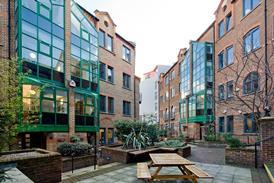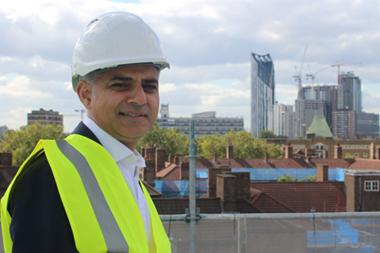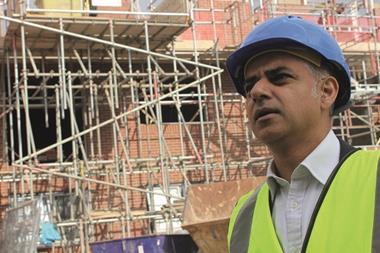The mayor of London Sadiq Khan has unveiled major changes to London planning guidance in a bid to speed up and increase the delivery of affordable housing in the capital.

Property Week outlines the five key takeaways from this week’s new supplementary planning guidance, which Khan says “demonstrates real progress on the long road towards fixing London’s housing crisis”:
1) A new viability system for 35% affordable housing
Arguably the biggest change - and biggest carrot for developers - is the prospect of schemes being fast-tracked if they include sufficient affordable housing. Under the new system, developers offering 35% affordable housing will have their schemes waved through without viability checks. Those that fall short of this threshold will go through the normal viability process - but will have to make their viability assessments public.
City Hall says the move will increase transparency and planning certainty and that it will “foster a greater understanding of and trust in the planning system”. Developers will be able to keep viability assessments private only “in very exceptional circumstances” and only when it is in the public interest, it adds. The mayor hopes that the 35% threshold becomes “embedded” and that land becomes cheaper as a result.
2) The affordable mix: a new London Living Rent
The new guidance also introduces two new tenure types within the 35% provision. Of the affordable homes in a development, 30% should be available at London Affordable Rent, which is a new tenure for those in the “greatest need”. City Hall will publish benchmark rents - a two-bed home, for example, will cost £153 a week - but may consider other levels if they are “genuinely affordable”.
A further 30% will go to intermediate affordable homes - either shared ownership or the new London Living Rent tenure. This sets maximum rents at one third of the average household income in a borough: across London, that will mean an average of £977 a month for a two-bed home. The boroughs will get to decide how the remaining 40% is split between the three tenures.
3) Expanding build-to-rent
In an attempt to encourage more high-quality rented homes, the mayor has exempted build-to-rent (BTR)developments from the threshold approach to viability. Instead, these schemes will be assessed on a case-by-case basis that takes into account the fact that rental income creates lower profits than for-sale properties. A form of discounted market rent - at similar levels to the London Living Rent - will form the basis of the affordable housing provision for BTR.

To qualify, developments will have to comprise more than 50 units and will have to remain as BTR blocks for 15 years. If a developer sells individual homes during this time, it will have to pay a ‘clawback’ charge to the local authority and the development can only be traded if it remains a BTR scheme.
4) Housing associations to shoulder most of the burden
Housing associations will still do the affordable housing heavy lifting, with many expected to reach 50% or even 60% within their own schemes. The government’s newly allocated £3.15bn to start 90,000 new affordable homes in London by March 2021 will allow housing associations - and their development partners - to provide homes at London Living Rent and London Affordable Rent as well as through shared ownership with the help of grants.
Renters of homes at London Living Rent provided under these grants will have a right to buy the homes they are renting within 10 years, with providers expected to support that process.
5) City Hall can’t enforce the guidance. Technically…
… this week’s guidance is just that, guidance, and as such boroughs could carry on with their current affordable housing practices if they wish. But City Hall does have a few aces up its sleeve, chief among them referrals.
City Hall will refer schemes that don’t meet the thresholds and yet receive planning to a new central crack team of viability experts. The overall idea is to ‘nudge’ developers to deliver more affordable homes by means of carrot (faster planning) and stick (referrals).
The mayor also intends to work closely with boroughs to ensure his guidance is broadly adopted across London. The guidance is now under consultation for three months.






























No comments yet